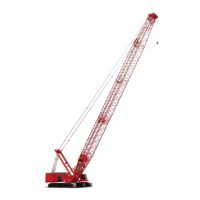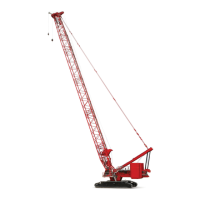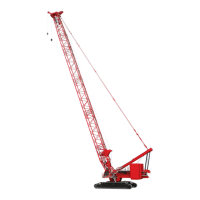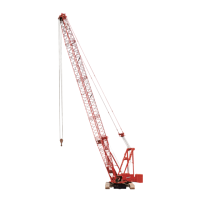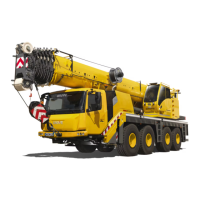SAFETY INFORMATION MLC90A-1/MLC100-1 OPERATOR MANUAL
2-26
Published 12-10-19, Control # 258-05
Barge Mount Definitions
1. Machine List, as defined by Manitowoc, is the crane’s
out-of-level condition — from side-to-side — as
measured by the angle between horizontal and a line
drawn through the centerline of the crane’s boom hinge
pins (Figure 2-11
). This out-of-level condition creates
side load and affects the crane’s lifting capacity.
2. Barge List (also referred to as heel or trim) causes swing
out of the load and may produce side load. When
Manitowoc provides a Capacity Chart showing
capacities for a 2 degree machine list for example, we
are referring to the maximum allowable lifting capacity
for the crane when experiencing an out-of-level
condition (side-to-side) of 2 degrees as measured by
angle between horizontal and a line drawn through
centerline of the crane’s boom hinge pins.
Unless otherwise specified in the Capacity Chart, barge
list (heel or trim) must not exceed the machine list
degrees given in the Capacity Chart.
3. Barge List and Machine List are not the same. As the
crane rotates on a barge, barge list (as defined above)
will change. The worst machine list condition generally
occurs when the crane swings over the corner of the
barge, producing maximum side load.
Inspection of Barge-Mounted Crane
To aid in preventing harmful and damaging failure as
previously indicated, regular inspection for signs of
overloading in the following load bearing components is
required. Correct each defect found before placing the crane
into service.
• Boom
• Counterweight
• Backhitch
• Rotating Bed
• Wire Rope
• Pendants and Straps
• Hook and House Rollers
When equipped with hook rollers, it is recommended that
each hook roller assembly be inspected daily for any sign of
overloading, to include:
• Deformation of roller path
• Proper hook roller adjustment
• Deformation or cracks in hook roller hanger
• Bent hook roller shaft
• Damaged bearings
Transporting Crane on Barge
If it is necessary to transport the crane on a barge, ship, or
floating platform when dynamic conditions will be
experienced, the boom must be lowered onto a cradle (or
other support) and the crane’s boom, rotating bed, and
lowerworks must be secured against movement. If the crane
is equipped with a mast, the mast must be securely tied
down with guylines. Failing to take these steps can result in
shock load or side load damage to the boom and mast.
WARNING
Tipping Crane Hazard!
Tie-downs which only prevent the crane from shifting as in
barge, ship or floating platform mounting, may not provide
adequate support when using a Capacity Chart for
pedestal mounting. Before operating a crane on a barge,
a ship or a floating platform, the crane user shall verify
that correct the Capacity Chart is being used — pedestal
mounted, barge mounted, 0°, 1°, 2° or 3° list or dynamic
Capacity Chart.
Failing to use the correct Capacity Chart can result in an
accident.
Figure 2-11. Machine List
Item Description
1 Centerline through Boom Hinge Pins
2 Horizontal
3 Barge Deck
L Degrees of Machine List (Maximum allowable is
specified in Capacity Chart)

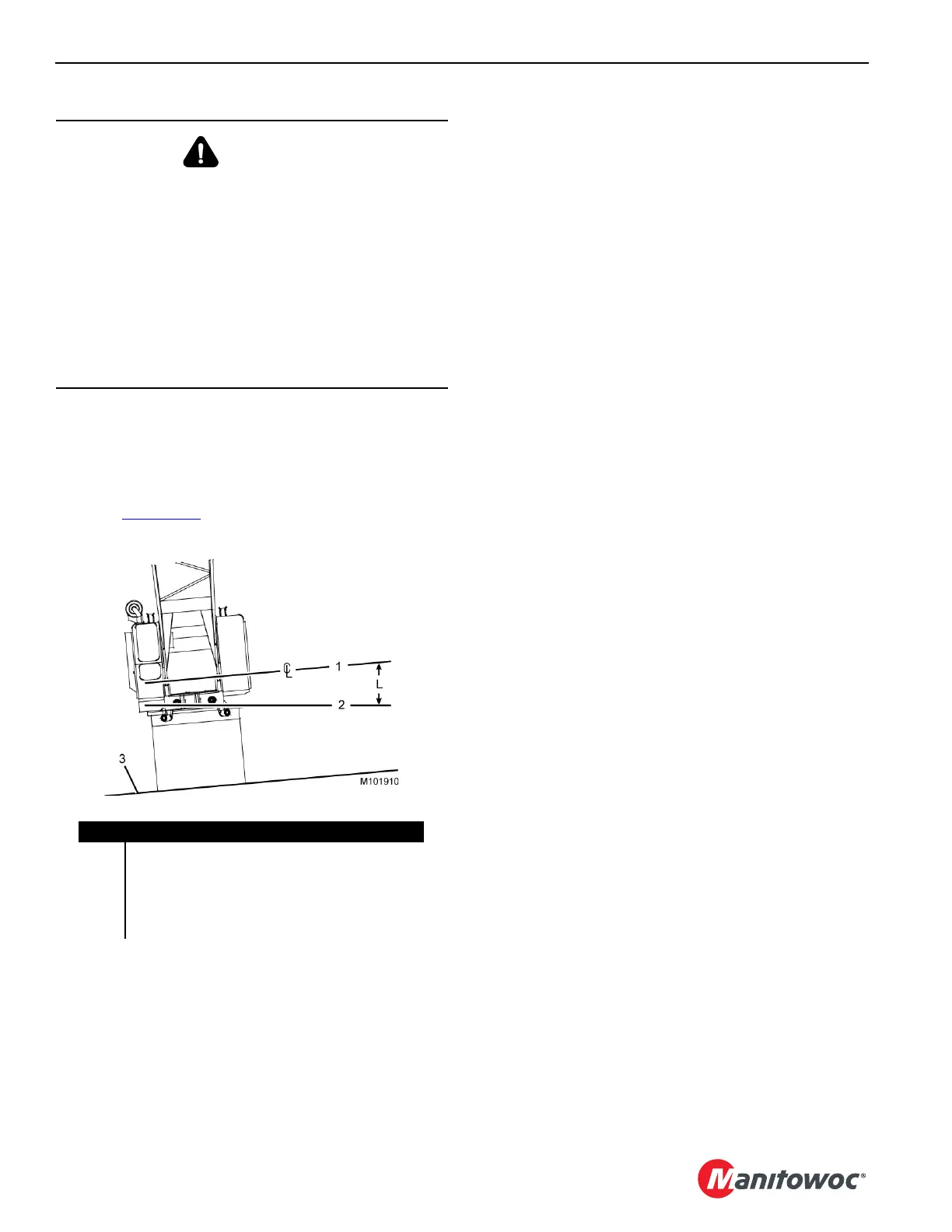